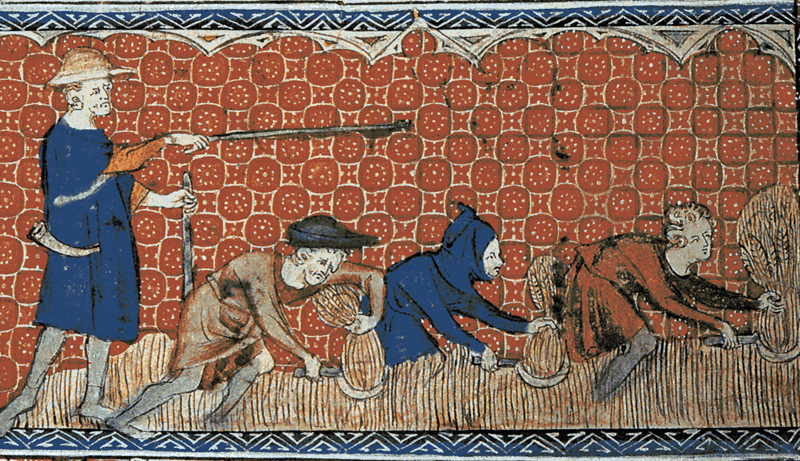
What is the difference between a slave and a serf? A slave is the property of the person who owns them while a serf is bound to the land they live and work on for generations.
Civilizations have taken slaves for as long as one group of people has fought another group of people. It was commonly accepted that the losers in a battle and their families would become slaves. Slaves were very important for the economies of most countries and Rome was pretty much built by slaves. When someone is made a slave, or born a slave, their freedom is taken away and they are no longer a person but the property of whoever bought them. The owner of the slave can sell them on in just the same way as they could sell a horse or a table. The slaves had no rights because they were not considered to be people. Occasionally, slaves could earn their freedom through long service, or buy their freedom, although that was very hard because slaves didn’t receive a salary.
Serfs are not the same as slaves because serfs do have some rights and they are not owned by anyone. However, they are still technically enslaved people because they don’t have their freedom. Serfdom began in Europe as the Romans disappeared in the 4th century AD and serfs were the main agricultural workers for over a thousand years.
So, what is a serf? Well, the word comes from the Latin servum, which basically meant servant or slave. Serf and serve and very similar. A serf was a person who was engaged to work on a piece of land for a noble. Nobles owned large pieces of land, called a manor or an estate. They obviously couldn’t work all of the land themselves and the idea of hiring workers was not really common. These nobles used serfs to farm the land for them. The serfs rented the land they worked on from the noble, but they had no money, so they paid the rent with the things that they grew and by working for free. Serfs couldn’t be sold like slaves are, but they could be sold along with the land they worked on. They were not slaves, but there was no way for them ever to get out of their serfdom because everything they grew, they had to give to the lord. They would be allowed to keep just enough to eat, but they were always under pressure to grow more for their lord. Their lives were very hard, and generations would work the same piece of land for years because there was no way to improve their situation.
Serfs were different to slaves because they did have some rights and being a serf, as hard as it was, did come with some benefits. The lord they worked for guaranteed their safety and their rents were generally controlled. There was only so much they could grow, and it made no sense for the lord to charge them more than they could produce. They were given certain areas that they could use to produce their own food and they had somewhere to live. On the other hand, there were a lot of restrictions on them. They had to get permission to marry, to exchange land, to buy land, to send their children to school, to fish, to collect firewood, and many other things.
Being a serf wasn’t an easy life and it ended in Britain in 1381. The main reason for this was the Black Death. By the 1300s, over 50% of all people in Britain were serfs and it was a huge part of society. However, the Black Death killed about 200 million people across Europe, which was about 50%. This meant that there were not enough people to work the land. Serfs could move to different places and try to earn more money, so laws were passed to stop them moving. Things got worse until the peasants revolted in 1381 and serfdom slowly declined after that. Serfdom ended in 1789 in France and was one of the causes of the French Revolution. The peasants were sick and tired of their conditions and they rose up. The Revolution stopped serfdom. In Russia, serfdom continued until 1861 when Tsar Alexander II freed all 40 million of the Russian serfs. Russia didn’t have the modern infrastructure that other countries had set up, which meant it was still very difficult to grow and distribute food, which is why serfdom lasted so long there. Today, there are technically no serfs left in the world, although there are. And this is what I learned today.
Image By anonymous (Queen Mary Master) – this file: scan dated 2009, uploaded (without identification of the source) 12 May 2010 by Ann Scott (medievalminds.comReeve-and-Serfs.original1.jpg), Public Domain, https://commons.wikimedia.org/w/index.php?curid=16340916
Sources
https://kids.britannica.com/students/article/slavery-and-serfdom/277088
https://en.wikipedia.org/wiki/Peasants%27_Revolt
https://en.wikipedia.org/wiki/Serfdom
https://www.etymonline.com/word/serf
https://www.americanscientist.org/article/the-bright-side-of-the-black-death
